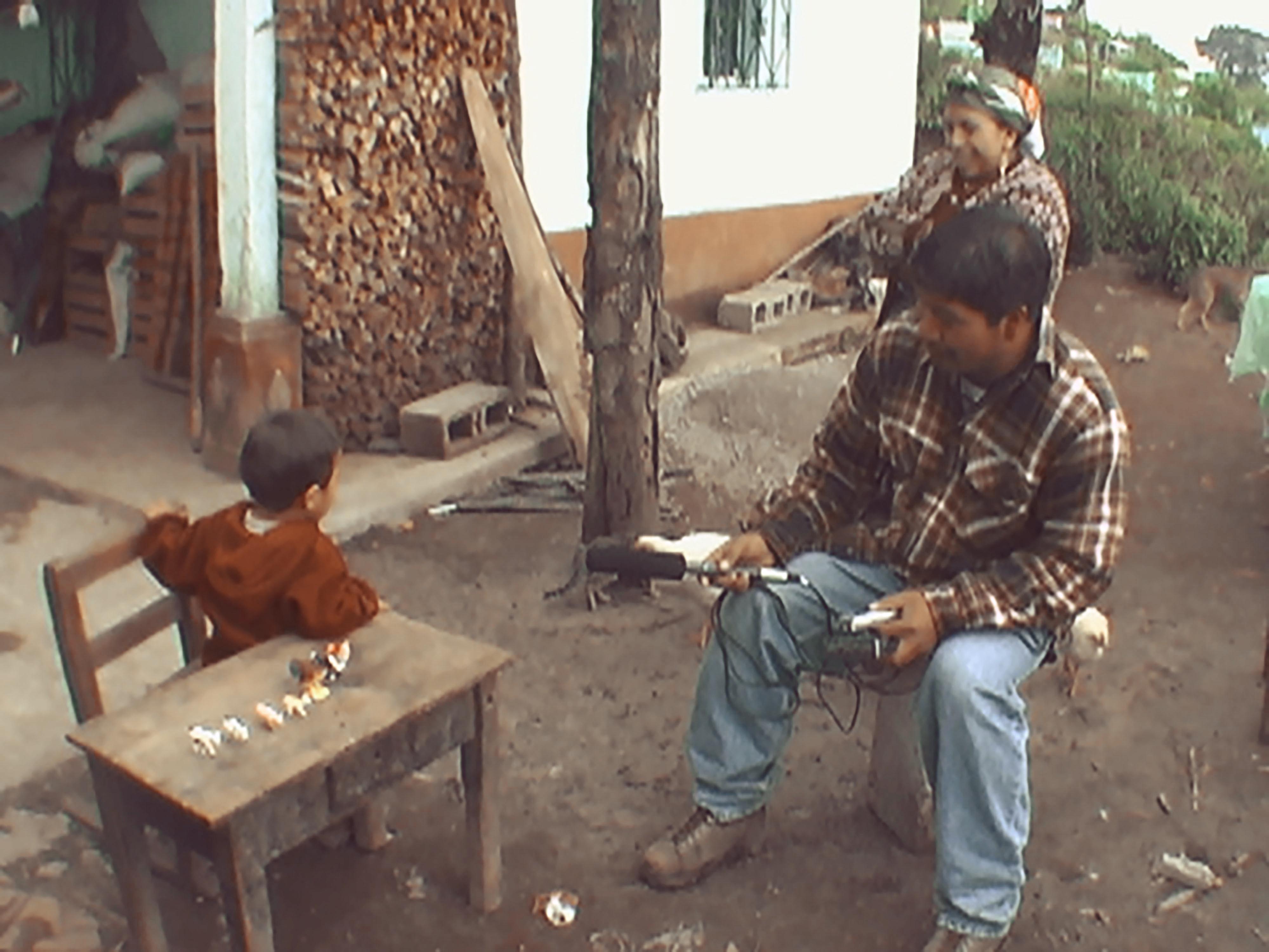Acquisition Numeral Classifiers in Q’anjob’al

This work is licensed under a Creative Commons Attribution-NonCommercial-NoDerivatives 4.0 International License.
Main Article Content
Main Article Content
Abstract
This study discusses the acquisition of the numeral classifiers -eb’, -k’on and -wan in Q’anjob’al by eva- luating data from three children of the following ages: Xhuw (1;9-3;0), Xhim (2;3-4;0), and Tum (2;7-3;6). The results demonstrate that within this age range children gradually and sporadically start using these classi- fiers. Although errors in the use of these classifiers reveal that children use the numeral classifier system in a different way from adults, given that they find it difficult to assign semantic value to the classification of human beings, animals, and objects. The low frequency of use of -k’on (classifier for animals) and -wan (clas- sifier for humans), and the frequent use of -eb’ (classifier for objects) form the input could explain why the use of -eb’ prevails in the children’s data. The children also make errors in the use of heb’ (corresponding to human beings) in order to pluralize human beings and animals, which would not be expected among adult speakers of Q’anjob’al.
Article Details
References
Arcos López, Nicolás (2009). Los clasificadores numerales y las clases nominales en ch’ol. Tesis de Maestría en Lingüística Indoamericana. México: Centro de Investigaciones y Estudios Superiores en Antropología Social (CIESAS).
Bale, Alan y Jessica Coon (2014). Classifiers are for Numerals, not Nouns: Consequences for the Mass-count Distinction. Linguistic Inquiry, 45(4), pp. 695-705, doi: https://doi.org/10.1162/LING_a_00170
Buenrostro, Cristina, José Carmen Díaz, Otto Schumann y Roberto Zavala (1989). Sistema de clasificación nominal del chuj (San Mateo Ixtatán). Memorias del Segundo Coloquio Internacional de Mayistas, 2. México: UNAM, pp. 1227-1235.
Craig, Colette G. (1977). The Structure of Jacaltec. Austin, Texas: University of Texas Press.
Craig, Colette G. (1986). Jacaltec Noun Classifiers: A Study of Grammaticalization. Lingua, 70, pp. 241-284, doi: https://doi.org/10.1016/0024-3841(86)90046-X
Craig, C. (1987). Jacaltec: Field Work in Guatemala. En T. Shopen (ed.). Languages and Their Speakers. Filadelfia: University of Pennsylvania Press, pp. 3-57.
Craig, C. G. (1990). Los clasificadores nominales: una innovación q’anjob’al. En N. C. England y S. R. Elliot (eds.). Lecturas sobre la lingüística maya. Guatemala: Centro de Investigaciones Regionales de Mesoamérica (CIRMA), pp. 253-264.
Grinevald, C. (2000). A Morpho-Syntactic Typology of Classifiers. En G. Senft (ed.). Systems of Nominal Classification. Cambridge: Cambridge University Press, pp. 50-92.
Denny, J. P. (1976). What are Noun Classifiers Good for? Papers from the Twelfth Regional Meeting of the Chicago Linguistic Society, pp. 122-123.
Duncan, Philip (2011). Noun Classifier Extension in Q’anjob’al (Mayan): Acquiring a Gender Stereotype. Kansas Working Papers in Linguistics, 32, pp. 67-83, doi: 10.17161/KWPL.1808.8098
England, Nora (1991). Changes in Basic Word Order in Mayan Languages. International Journal of American Linguistics, 57, pp. 446-486, doi: https://doi.org/10.1086/ijal.57.4.3519735
England, Nora (1994). Autonomía de los idiomas mayas: historia e identidad. Guatemala: Cholsamaj.
Francisco Pascual, Adán (2005). Yaq’b’anil stxolilal ti’ q’anjob’al. Gramática descriptiva q’anjob’al. Guatemala: K’ulb’il Yol Twitz Paxil, Academia de las Lenguas Mayas de Guatemala.
Francisco Pascual, Adán y Antonio Benicio Ross (1998). Los clasificadores en la rama q’anjob’al, un sistema de identidad lingüística. Ponencia presentada en el 4o. Congreso Internacional de Mayistas, Antigua Guatemala, Guatemala.
Fromkin, Victoria, Robert Rodman y Nina Hyams (2011). An Introduction to Language. 9a edición internacional. Massachusetts: Wadsworth Cengage Learning.
Hopkins, Nicholas A. (1967). The Chuj Language. Tesis doctoral. Chicago, Illinois: Universidad de Chicago.
Hopkins, Nicholas A. (2012). The Nouns Classifiers of Cuchumatán Mayan Languages: A Case of Diffusion from Otomanguean. International Journal of American Linguistics, 78(3), pp. 411-427, doi: https://doi.org/10.1086/665919
Kaufman, Terence (1974). Idiomas de Mesoamérica. En Seminario de Integración Social Guatemalteca. Guatemala: Ministerio de Educación, vol. 33.
Mateo Pedro, Pedro (2013). Adquisición del clasificador nominal ix en q’anjob’al. Revista Voces, 8(2), pp. 5-28.
Mateo Pedro, Pedro (2015). The Acquisition of Inflection in Q’anjob’al Maya. Ámsterdam: John Benjamins.
Mateo Toledo, Eladio (1999). La cuestión akateko-q’anjob’al, una comparación gramatical. Tesis de licenciatura. Guatemala: Universidad Mariano Gálvez de Guatemala.
Mateo Toledo, Eladio (2008). The Family of Complex Predicates in Q’anjob’al Maya: Their Syntax and Meaning. Tesis doctoral. Austin: Universidad de Texas en Austin.
Martin, Laura (1977). Positional Roots in Kanjobal (Mayan). Tesis de doctorado. Gainesville: Universidad de Florida.
Matsumoto, Yo (1985). Japanese Numeral Classifiers: Their Structure and Acquisition, Tesis de maestría. Tokio: Sophia University.
Peñalosa, Fernando (1992). ¿Cuántos idiomas q’anjob’al existen? Boletín de Lingüística, 5, pp. 1-15.
Pfeiler, B. (2009). The Acquisition of Numeral Classifiers and Optional Plural Marking in Yucatec Maya. En Ursula Stephany y Maria D. Voeikova (eds.). Development of Nominal Inflection in First Language Acquisition. A Cross-Linguistic Perspective. Berlin, Nueva York: De Gruyter Mouton, pp. 91-110.
Pye, C. (2017). The Comparative Method of Language Acquisition Research. Chicago: University of Chicago Press.
Pye, Clifton (2019). Minimal Coding Page. Disponible en http://pyersqr.org/minimal/ (consulta: 05/02/2021).
Pye, C., Pfeiler, B. y Mateo Pedro, P. (2017). The Acquisition of Mayan Languages. En J. Aissen, N. England y R. Zavala Maldonado (eds.). The Mayan Languages, Londres/ Nueva York: Routledge Taylor y Francis Group, pp. 19-42.
Raymundo González, Saqjumay Sonia, Adán Francisco Pascual, Pedro Mateo Pedro y B’alam q’uq’ Eladio Mateo Toledo (2000). Sk’exkixhtaqil yallay koq’anej, Variación dialectal en q’anjob’al. Guatemala: Cholsamaj.
Richards, Michael (2003). Atlas lingüístico de Guatemala. Guatemala: Universidad Rafael Landívar.
Salehuddin, Khazriyati (2009). The Acquisition of Numeral Classifiers by Malay Children. Tesis doctoral. Penrith, Australia: University of Western Sydney.
Sanches, M. (1977). Language Acquisition and Language Change: Japanese Numeral Classifiers. En M. Snaches y B. Blount (eds.). Sociocultural Dimensions of Language Change, Nueva York: Academic Press, pp. 51-62.
Shneidman Laura A. y Susan Goldin-Meadow (2012). Language Input and Acquisition in a Mayan Village: How Important is Directed Speech? Developmental Science, 15(5), pp. 659-673, doi:10.1111/j.1467-7687.2012.01168.x
Yamamoto, Kasumi y Frank Keil (2000). The Acquisition of Japanese Numeral Classifiers: Linkage between Grammatical Forms and Conceptual Categories. Journal of East Asian Linguistics, 9(4), pp. 379-409, doi: 10.1023/A:1008308724059
Zavala Maldonado, Roberto (1987). La morfosintaxis de los clasificadores nominales en kanjobal de San Miguel Acatán (acateco). Memorias del Segundo Coloquio Internacional de Mayistas, 2, pp. 1237-1245.
Zavala Maldonado, Roberto (1992). El kanjobal de San Miguel Acatán. México: Universidad Autónoma de México.
Zavala Maldonado, Roberto (2000). Multiple Classifier Systems in Akatek. En G. Senft (Ed.). Systems of Nominal Classifiers (pp. 114-146). Nueva York: Cambridge University Press.








